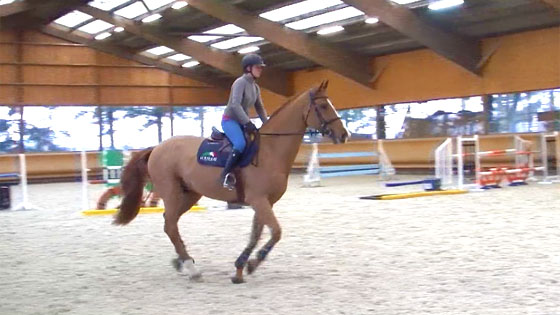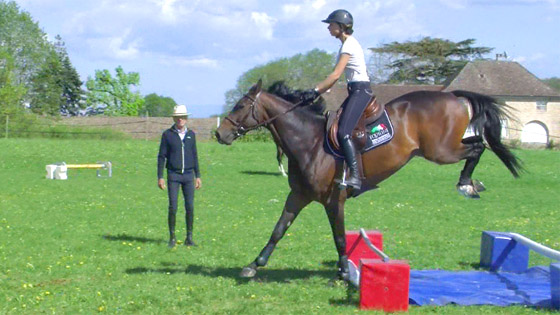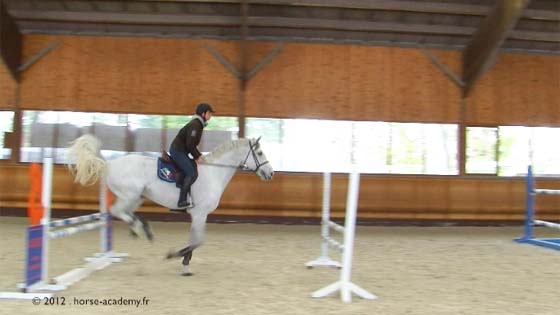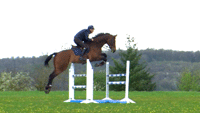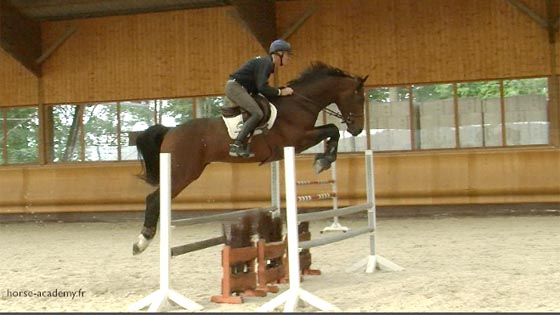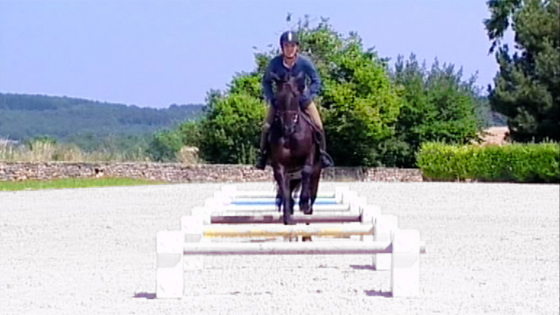What should one do when the horse rushes the fences?
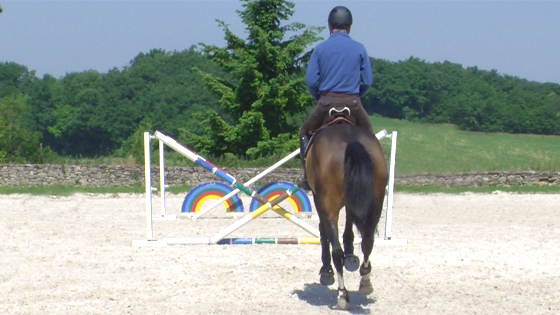
Set loose, a horse rarely rushes a fence of its own free will. On the contrary, it would rather go around it or stop. If it does jump it, will maintain the same cadence, or prudently slow down.
Set loose, a horse rarely rushes a fence of its own free will. On the contrary, it would rather go around it or stop. If it does jump it, will maintain the same cadence, or prudently slow down.
It is riders who teach horses to rush at fences –either through bad use of the long whip when the horse is unmounted or lunged, or because the rider has taught it to do this by cantering faster when approaching a fence.
Basically, each jump has its own canter. It is in your best interest to use this canter well before the approach and maintain it up to the take-off spot and after landing.
When a horse tends to charge its fences, I ask the rider to do the opposite of whatever he fears. « If you are afraid the horse will take off with you in front of the fence, come towards the jump at a fast canter from quite far off and slow down for the last few strides, as if you were going to jump at a standstill. « One very soon observes that the rider does not exaggerate and maintains an average speed throughout his approach.
The same happens if one places a small fence on the track followed by an enormous upright seven strides away; everyone will be calm and fully in control over the first fence.
It is the rider’s imagination that will allow for a calm and concentrated attitude and therefore he will also control the horse.

